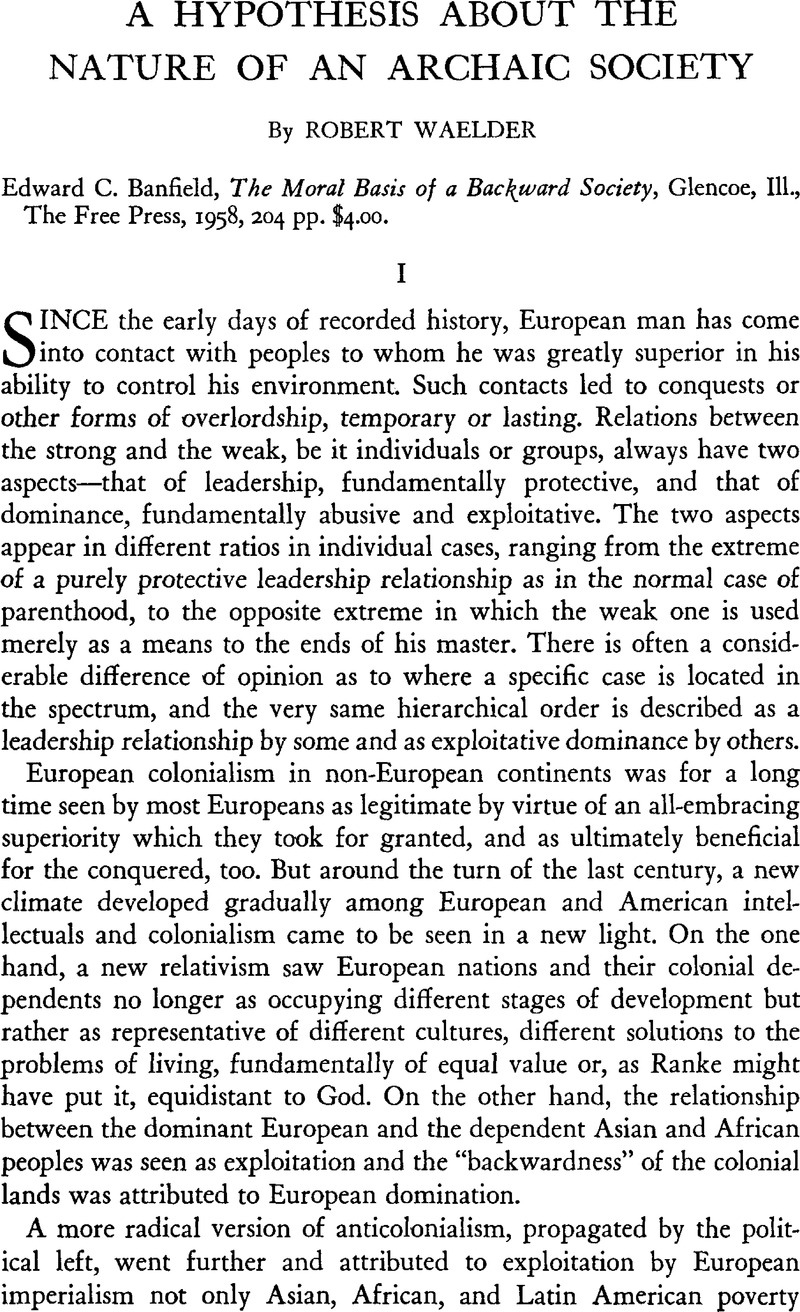No CrossRef data available.
Article contents
A Hypothesis About the Nature of an Archaic Society
Review products
Published online by Cambridge University Press: 18 July 2011
Abstract

Information
- Type
- Review Articles
- Information
- Copyright
- Copyright © Trustees of Princeton University 1959
References
1 Regrettably, the author has not quite succeeded in eliminating signs of moral condescension and impatience with the people for failing to act as they should for their own good.
2 At the present, we hear, the mortality rate is very low, a change which the author attributes, as a matter of course, to antibiotics (p. 167). The validity of this interpretation could only be judged if one knew whether the killers which are now taking a diminished toll are diseases responsive to antibiotics and whether antibiotics have actually been administered to the survivors. But even if that were proved, it would still not be conclusive that credit for the lowered death rate belongs to the new drugs. There are other possibilities; their introduction could, e.g., have coincided with a decline in the toxicity of some invading organisms or the increased adaptation of the human population to them, both on the ground of evolutionary changes. (Cf. Dubos, René, The Mirage of Health, New York, 1959.)Google Scholar Also, the lowering of the death rate in general does not necessarily indicate that the life expectancy of the parents of young children has increased. These are minor points in the context of the study, but they suggest that Banfield's conclusions cannot always be taken at face value.
3 “Psychoanalysis and the Social Structure,” Psychoanalytic Quarterly, XIX (1950), pp. 371–84.

